Employee Relations Assignment: Employee Relationship Management At Pfizer
Question
Task: Prepare a 3,500-word case study-based report on employee relations assignment considering the following: You work as the HR Manager for a large pharmaceutical company based in the UK but with another plant based in a country of your own choice. Your firm has been struggling financially of late and as such you have been unable to offer a wage increase to employees. This is the first time such a situation has arisen. Your employees are unhappy about this and are considering strike action. Your CEO is unfamiliar with employee relations issues and has asked you to compose a report which addresses the following:
1. An introduction which analyses why the context is an issue to employees and considers the impact of local, national and global contexts shaping the employee relations climate.
3. Recommendations and critical analysis regarding how the organization should seek to manage employee relations and avoid potential industrial action including consideration of procedures and processes to mitigate potential future risk of conflict.
Answer
Answer 1: Introduction
A UK based pharmaceutical company intending to establish its new setup in India. This report on employee relations assignment is intending to show the employee relation issue in this pharmaceutical company. Pfizer is facing a financial crisis due to this context; the wage hike becomes critical to this company (Esteves, 2018). The employee's relationship with the management is becoming worse due to the not increment of their salary. This report will be discussinghow not hiking in salary affects the employee’s relationship. This discussion will also go to mention the local, national, and globalshapingimpacts on employee's relation climate.In the later part of the report, some theories will be mentioned to analyse the different aspects of employee relationswith the different perspectives of another related party in employee relationship with the organisation. With the help of different theories, this idea will be more appropriate to understand the effect of salary onemployees’ engagement with their organization (Alnajim, 2021). After finding the different aspects of employeerelations, this report will recommend some relationship managing strategies to avoid the possible future conflicts between the organisation management and employees.
Any disruption in the important factors of global, national, and local aspects will directly affect the financial condition of the company; if those factorsperformin an efficient manner, then the employee’s remuneration will be affected. Local factors:The local factors that act on the employee’s relationship withthe pharmaceutical industry are the economic conditions of the company, technological interactions, including managerial interactions, and the leadership style where the company is situated.If the economic conditions of the company deteriorate, it directly impacts the salary hike of the employees, and there may be a chance of employee dissatisfactionwith the management (Al-Amin et al., 2018). Deterioration in the economy also affects the updating of new technologies. Update technology in the field of the pharmaceutical industry helps to improve the working efficiency helps to reduce time in the track management of patients and medical information. The obsolete technology will increase the employee’s working pressure. As per Deliu (2019), empathetic managerial behaviour helps to strengthen the employee's relationship with the management. The effectiveness of the leadership style also impacted the employee's motivation and behavioural aspects. National factor: Different national factors like political, economic, technological, legal, including the environmental factor effects on the employee management system of a company that directly impacted on employee relationship. Different types of regulatory frameworks In the UK are impacted on the differential activities of the company. The regulatory medicine system of Europe works with a network consisting of 50 regulatory professionals. The economic condition of the UK is directly impacting the company’s operational activities. The changing rate of fluctuations, including the national currency deviation, impacted the salary incrementation of the employees (Gineviciuset al., 2020).
Global factors:In Brexit, the pharmaceutical industries of the UK are considered as the negotiating activities. This industry is capable of making a strong position in the after Brexit conditions rather than the other companies (Powdthaveeet al., 2019). Due to the economic issues in the company, the global expansion will be difficult. People management, including the different operational structures, may be disrupted due to the unhealthy worker relationship in the global context. Answer 2: Critical analysis of different theories on the employment relationship, including the different roles of different parties in the employee relationship management.
Employee relationships can be understood by the different types of theories and perspectives. In the following section, some perspective has been discussed, which helps to interpret different conflicts that may arrive in the workplace. The functionality of job regulations and different people involved in employee management can be obtained through the discussing theories.
Unitarist perspective
As per Vithana, Soobaroye and Ntim (2021), it is a perspective that describes employment emphasise the common interest of every member in the workplace. Effective leaderships are aims to establish a common purpose and a compatible relationship within the company. Pfizer pharmaceutical company is following the autocratic leadership style that hampers employee management by controlling the workplace environment through individual authorisation. According to Wangila and Kiiru (2019), the employees are dissatisfied with the salary structures provided by the authority, which may create an adverse effect in the future operational condition in the global context. As per the Unitarist perspective, healthy relationships can be maintained by sharing the common purpose to every employee in the organisation. Due to the financial downstream in the company, employees are facing a lack in the salary increment (Kaufman et al., 2021). As per these perspectives, every employee should be involved in the common purpose of the company.
As per Svajone and Sarka (2018), if the employee’s loyalty can be achieved by effective leadership management, then the employees gain the chance to understand the critical issues that arrive in the workplace environment. This theory concludes that business unions are not essential to managing the relationship between the employees and the organisational authorities. In the workplace environment, the dissatisfaction in the employee’s behaviour can be considered as a disruptive result, including thepathological outcome. As per Nechanska, Hughes and Dundon (2020), conflict in the employee’s relationship may have resultedfromcommunicational disruptions interpersonal frictions, including the agitators of the management leaders.So, strong communication and interaction between the employees and the management can help to mitigate the behavioural issues of the employees and help to understand the different financial issues of the company.
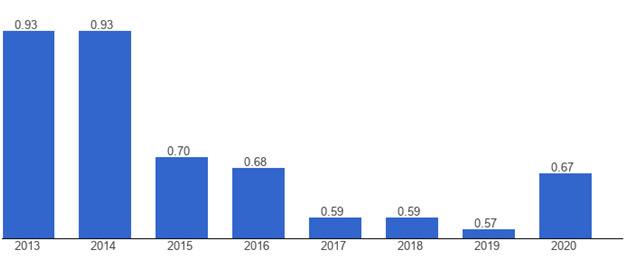
Figure 1: Unitarist Perspective
(Sources: Hrechyshkina and Samakhavets, 2019).
Pluralist perspective
As per Roheet al. (2019), the pluralist perspective describes the impact of the different functional groups within the organisation to maintain the relational approaches of employees. As per this perspective, different groups inside the company takes different legal loyalties, including different leadership styles, with specific goals. According toAM et al. (2019), examples of such groups are the trade unions that are initiated with union leaders with the subordinates working towards the common benefits of the employees, such as salary increments, medical leaves, or other allowances. Managements unions are one of them who also have the same criteria and working procedures for the employee’s management.
The relationship between the union-management is asocial process in dynamic ways. Maintaining a harmonious relationship between the employees and the management is the common goal of such groups. As per Matthews (2018), improving the trade unions or the management unions activities the employee’s relationship also can be improved. Through the developing procedures,the coordination in the employees' behaviour, including the persuasion control, can be obtained within the employee management through effective managerial procedures by the authority. If the authority fails tomaintain the employees’ aspects regarding job satisfaction can result in a disruptive outcome due to the incremental employee’s dissatisfactions towards their duty. According to Akanbiemu (2021), sometimes management provides huge pressure on their employees, including failing to provide a sufficient salary structure that reduces the chance of employee retention in the company. The lawful delegacy is provided by the effective leaders within the unions by taking the collaborative effect of the employees and the subordinates within the organisation (Schulten, 2018). If the employees are not satisfied with their salary structure, then such trade unions might introduce some regulatory actions towards the management. In such a situation, the conflicts gain ahuge chance of increase which intensify the chances of employee termination. The Pluralist perspective proposes the collective bargaining procedures between the employees and the management regarding the arrives issues in the workplace environment. Trade union in such contexts plays a third-party role in order to implement a negotiation process between employees and the managers or the supervisors in the company.
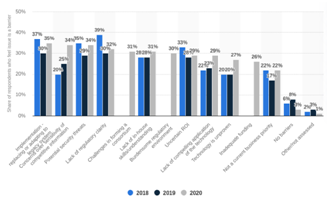
Figure 2: Pluralist Perspective
(Sources: Memonet al., 2018).
As per Müller, Vandaele and Waddington (2019),in collective bargaining,the leaders first initiate preparations,wherethe bargaining committee is selected by the voting procedures, then determining the issues and the finding of the mitigation strategy of it. Then in the next step, the bargaining procedure is established between the CEO and the employees, where both are presented their issues and the criteria. After gaining a tentative agreement, the voting system is placed. In the ratification step, the union are decided the majority power to present the final decision. Then the final decision is legally bound. So, this perspective helps to understand the benefits of collective bargaining to establish a good relationship between the employees and the management to discover a mutual understanding of salary negotiations (Horecký, 2018). Through the positive concept of Pluralism, a healthy relationship within the company can be obtained.
Marxist perspective
As per James and Leung (2018), another identity of Marxist perspective is a radical perspective where the nature of capitalist society is revel which states that history works against the workplace relationship between the employees and the management authorities. In the global context, this theory explains how inequality in poweraffects the employee relationship. In the context of resource exploitation, the issues are guided by the positive activities of the trade unions. Marxist perspectives invite a joint regulation that helps to establish a common understanding between the employee’s aspects and the management criteria. As per Szadkowski (2019), a conflict can occur inherently between the working class and the capitalist; a class conflict may be created inevitably between the parties that can be negotiated with the help of collective bargaining and the mutual understanding between the managers and the employees.
System theory
Through the help of system theory, an alternative way of understanding, planning, and managing work activities can be managed. HR has a great role in managing the employee’s motivation and their working efficiency to the job by taking care of their different aspects (Rakhmonovet al., 2020). HR activities also help to strengthen the cooperative understanding between the employees and the management. A fresh perspective can be obtained with the help of system theory that facilitates the relationship initiatives to make a strong bond between the higher authority and the employees. This theory also helps to understand theemployee's necessity to the management, and as per this understanding, management may help to take the necessary activities regarding the employee’s benefits.
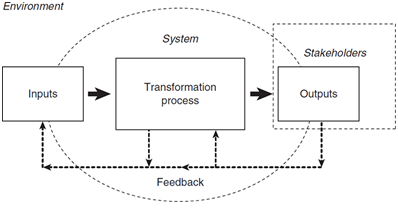
Figure 3: Critical Political Economy theory
(Sources: Lyngset al., 2019).
Critical Political Economy theory
This theory works upon the interest of the power and control of the employees to understand their values in the organisations. The employment relationship with the management is dominated by the capital and increase many disruptions as per the context’s enhanced social institutions. This theory helps to understand each employee's responsibilities depend on their own reasoning in an economic context (Buch-Hansen, 2018). This understanding helps to prominent the economicaspects of the employees and the management, and it facilitates to think about the increment of the salary structure to the benefit of the employee’s context.
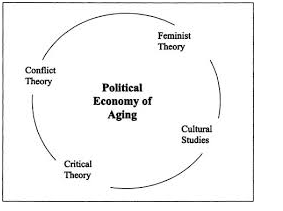
Figure 4: Political Economic Theory
(Sources: Buch-Hansen, 2018).
Answer 3: Recommendations of the ways by which Pfizer should manage Employee Relations
The suggested ways by which the pharmaceutical company Pfizer should manage the relations of employees in India can be analysed as the ways of applying the exact policies and ways also by leading the training programs with the application of internal monitoring and auditing. The company must manage a good relationship with the employees by the ways of breaking through the change of patient’s life. It is suggested for the Pfizer company to maintain a good quality of open communication where the managers or HR must manage a list of things to do with communication (Kanter et al., 2020). It is also essential to show gratitude by maintaining a consistent level of feedback from the employees of the company to maintain good performance management. It is also essential for the company to maintain an investment in the employees. These are some of the ways by which the company tries to maintain a good employee relationship.
Recommendations to Improve the Concept of Team Management
According to the views of Wang, Xiao, and Ren (2022), some of the other ways by which the company should manage the relations of employees can be analysed by the ways of getting to know the team on an individual level as it will help the HR to know the employees of the pharmaceutical company in a better way that will further lead to a healthy culture of work in the organisation. This process will reduce the level of conflicts and misunderstandings that can spoil or ruin the environment of the workplace and it will also reduce the stress level of individuals (Dempsey-Brench and Shantz, 2021). It is also essential to keep a good level of channels on communication open as this will encourage a high quality of work that will observe the understanding of good policies for the company such as a broad differentiation in the level of strategy for the business also to become the world’s most valued organisation to all people by meeting and fulfilling every requirement of the organisation.
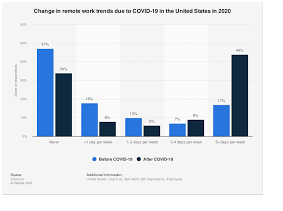
Figure 5: Concept of Team Management
(Sources: Bhallaet al., 2018).
Recommendations on Managing the Portfolios of Projects
It is also suggested for the company to make an illustration of the caring attitude as a boss in the pharmaceutical organisation where the employees will be able to respond positively to the policies to resolve the major issues such as a lack in the level of trust among the employees were the issues in the performance decrease. In a nutshell, it will be essential for HR to create their process of development in the product where the role of HR can be analysed by gating and aligning on the efforts of development by managing the portfolios of projects efficiently. This means the entire performance of the company and employees efficiently. It is also suggested to create a clear communication on the company’s vision and mission such as the maintaining of powerful core values like courage, equity, excellence, and joy (Kobayashi, Howell, and Heinrich, 2021). The company also works on the purpose of breaking through a change in the life of patients with other priorities of sustainability of environmental aspects such as a focus on the impact of climate mitigation, conservation of natural resources, and lastly, a reduction of waste that arises from the major functions. It will also be suggested to make the employees feel valued and respected by maintaining a higher level of participation, satisfaction, and motivation. It will be also suggested to promote a balance of work-life as it will help to maintain good mental health among the employees that will make the employees happier. This will, in turn, will help to reduce the level of stress and chances of burning out of employees as these are the two most common problems in the workplace.
There will be the offering of career opportunities of development as this process will increase the level of motivation and productivity among the employees. This will help in the retention of employees by providing values by the support of development in career and growth of employees where it is mandated by the process of human resource management. As per the views of Carnevale and Hatak (2020), here, the role of HR will work to prevent and solve the issues or disputes among the employees and management. In a nutshell, HR will play the role of development of products and services of the development of the management programs by taking up initiatives of culture and planning of compensation that are closely related with the business requirements of the Pfizer company and its branches. It is also essential to make up a routine of regular one-on-one check-ins where there will be a positive relationship between a manager and employee will begin as this will provide for the improvement in the employee’s performance and productivity level. The analysis of the supply of labour supply by the forecasting demand of labour (Vranjes, Notelaers, and Salin, 2022). This will also provide for a balance in the projected demand of labour with the supply and support of organisational goals. These HR strategies provide for the implementation of strategies that reduce the conflicts in the workplace and, this can bring back harmony in the relationships among the employees and plays the action for restoring the effective employment of functional relationships in the pharmaceutical company.
Recommended Ways to Ignore the Industrial Actions to Mitigate the Future Risks of Conflict
Recommended Ways to Ignore the Industrial Actions
Recommended ways to ignore the industrial actions of Pfizer company such as the involvement of medicines and vaccines that is known as the consumer of health care products. The company also works to make advancements in the aspects of wellness, prevention, treatments, and proper cure of the diseases of the time. The major activities of the pharmaceutical companies include the business in the commercial space, research and development areas, and manufacturing in the cases of packaging and distribution. Therefore, the recommended ways to ignore the industrial activities of the pharmaceutical company can be considered as the ways to manage the tests of the quality control in the pharmaceutical process (Pickup, 2020). The management of quality control in the pharmaceutical company or sector can be analysed as the ways of managing the control quality of the specialty of the organisation such as in the department of discovery and department of manufacturing of health care products that involve the medicines and vaccines in the best-known area of the customer’s health care products. It is suggested to include the management of risk in the pharmaceutical company that is defined under a system of processes for maintaining the control in communication in the pharmaceutical company.
According to the views of Kimbuet al (2021), the conflicts of interest in the pharmaceutical sector or Pfizer include a set of instances or incidents that makes up a risk of professional judgment for the primary interest that will be influenced by a secondary interest of the company. The application of an innovative and effective design of regulatory applications and the commercialisation of plans will ensure optimal usage. This can mitigate the related burdens that will help to secure benefits for the affected products and patients. The company is also related to the execution of risk minimisation programs by managing the complexity as the commitments for the portfolio of products are in consideration (Brown, McCartney, and Heneghan, 2020). This will implement the delivery of communication of plans to assure a safe usage of consistent coordination. It is also suggested to implement safety and efficacy. The regulatory requirements evaluate the mindset of risks that turns into a development and market success becomes a major product of differentiation.
Recommended Ways to Mitigate the Risks of Conflict
According to the views of Al-Amin et al (2018), it is also suggested that the best ways to enhance the pharmaceutical industry or the company involve the investment in the equipment of quality by creating a proper and efficient maintenance program that will ignore the downtime and mistakes in production and productivity. Therefore, this increases the productivity level of the company. This will balance the clinical trials with the aspect of social distancing where the smart devices and wearable technology will provide the bringing of patient center into the spotlight. The ways to resolve the individual conflicts of interest are by changing the compromised relationship of employees to the private interest. The ways involve the divesting of interest of the private ownership, terminating or resigning the relationship with the private entity, and lastly, placing the employee’s interests of investments in a blind trust (Jindal and Shaikh, 2021). The processes also include the process of resigning and reassigning the duties of work and restricting important access to the information. Therefore, the suggested ways to resolve the managing conflicts can be analysed as reducing the number of roles related to conflicts of the pharmaceutical company. The ways of ignoring the industrial actions of Pfizer company such as the involvement of medicines and vaccines can be analysed as the ways of creating financial inventories and mapping them against the standard of risk and taxonomy. It is also essential to estimate the likelihood and depth of risk by considering the correlations among the employees by aggregating the risks and ranking them in order of priority.
It is also essential to show gratitude by maintaining a consistent level of feedback from the employees of the company to maintain good performance management. It is also essential for the company to maintain an investment in the employees. It is also essential to keep a good level of channels on communication open as this will encourage a high quality of work that will observe the understanding of good policies for the company such as a broad differentiation in the level of strategy for the business also to become the world’s most valued organisation to all people by meeting and fulfilling every requirement of the organisation (Martins et al., 2019). It will also be suggested to make the employees feel valued and respected by maintaining a higher level of participation, satisfaction, and motivation. It will be also suggested to promote a balance of work-life as it will help to maintain good mental health among the employees that will make the employees happier. This will, in turn, will help to reduce the level of stress and chances of burning out of employees as these are the two most common problems in the workplace (Daly 2019). There will be the offering of career opportunities of development as this process will increase the level of motivation and productivity among the employees. This will help in the retention of employees by providing values by the support of development in career and growth of employees.
Conclusion:
Through the help of the above-mentioned theories and the perspectives, the organisation gains a brief idea about the incremental procedure of the employee and management relationship. The use of collective bargaining will help to understand the negotiation process of fixing the salary structure of the employees so that the dissatisfaction level of the employees does not make disruptive and exploitative conditions in the global business market. The recommendation section will help in the retention of employees by providing values by the support of development in career and growth of employees.
Reference List
Akanbiemu, A.A., (2021). Employee Relations, Job Satisfaction and Employee Commitment of Librarians in universities in Ondo State, Nigeria. Employee Relations, 16(3).https://www.jeweljournals.com/admin/published/7500963611.pdf
Al-Amin, M., Maruf, M.F., Haq, S. and Wali, A.S., (2018). Employee Engagement Drivers in Bangladesh: A Case Study of Foreign and Local Pharmaceutical Companies. Australia and New Zealand Journal of Social Business, Environment and Sustainability 5 (1): 46, 63. https://www.researchgate.net/profile/Md-Al-Amin-39/publication/328529909_Employee_Engagement_Drivers_in_Bangladesh_A_Case_Study_of_Foreign_
and_Local_Pharmaceutical_Companies/links/5bd2b00692851c6b278f3dbb/Employee-Engagement-
Drivers-in-Bangladesh-A-Case-Study-of-Foreign-and-Local-Pharmaceutical-Companies.pdf
Al-Amin, M., Maruf, M.F., Haq, S. and Wali, A.S., (2018). Employee Engagement Drivers in Bangladesh: A Case Study of Foreign and Local Pharmaceutical Companies. Australia and New Zealand Journal of Social Business, Environment and Sustainability 5 (1): 46, 63.https://www.researchgate.net/profile/Md-Al-Amin-39/publication/328529909_Employee_Engagement_Drivers_in_Bangladesh_A_Case_Study_of_Foreign_and_ Local_Pharmaceutical_Companies/links/5bd2b00692851c6b278f3dbb/Employee-Engagement-Drivers-in- Bangladesh-A-Case-Study-of-Foreign-and-Local-Pharmaceutical-Companies.pdf Alnajim, A., (2021). Impact and Application of Social Exchange Theory in Employee Retention. Available at SSRN 3884032.https://www.researchgate.net/profile/Afnan-Alnajim-2/publication/353219725_Impact_and_Application_of_Social_Exchange_Theory_in_Employee_ Retention/links/6157202a61a8f46670996f83/Impact-and-Application-of-Social-Exchange- Theory-in-Employee-Retention.pdf
AM, A.I. and Nugrahani, F., (2019). Strengthening pluralism in literature learning for character education of school students. Humanities & Social Sciences Reviews, 7(3), pp.207-213.https://core.ac.uk/download/pdf/268004081.pdf Bhalla, V., Caye, J.M., Lovich, D. and Tollman, P., (2018). A CEO’s guide to Talent Management today. Boston Consulting Group. Retrieved. https://web-assets.bcg.com/img-src/BCG-A-CEOs-Guide-to-Talent-Management-Today-Apr-2018_tcm9-207924.pdf Brown, V.T., McCartney, M. and Heneghan, C., (2020). Appraisal and revalidation for UK doctors—time to assess the evidence. bmj, 370. https://qmro.qmul.ac.uk/xmlui/bitstream/handle/123456789/67260/Tzortziou%20Brown_Appraisal% 20for%20BMJ%20Analysis_accepted-ms_2020.pdf?sequence=9 Buch-Hansen, H., (2018). The prerequisites for a degrowth paradigm shift: Insights from critical political economy. Ecological Economics, 146, pp.157-163.https://research-api.cbs.dk/ws/files/58202056/hubert_buch_hansen_the_prerequisites_for_a_degrowth_paradigm_shift_acceptedversion.pdf
Buch-Hansen, H., (2018). The prerequisites for a degrowth paradigm shift: Insights from critical political economy. Ecological Economics, 146, pp.157-163. https://research-api.cbs.dk/ws/files/58202056/hubert_buch_hansen_the_prerequisites_for_a_degrowth_paradigm_shift_acceptedversion.pdf Carnevale, J.B. and Hatak, I., (2020). Employee adjustment and well-being in the era of COVID-19: Implications for human resource management. Journal of Business Research, 116, pp.183-187. https://www.ncbi.nlm.nih.gov/pmc/articles/pmc7241356/ Daly, A., (2019). A Study Investigating the Impact of Work-Life Balance on Job Satisfaction and Levels of Perceived Stress in Full-time Employees (Doctoral dissertation, Dublin, National College of Ireland). http://norma.ncirl.ie/3908/1/amandadaly.pdf Deliu, D., (2019). Empathetic leadership–Key element for inspiring strategic management and a visionary effective corporate governance.Employee relations assignment Journal of Emerging Trends in Marketing and Management, 1(1), pp.280-292.http://www.etimm.ase.ro/RePEc/aes/jetimm/2019/ETIMM_V01_2019_101.pdf Dempsey-Brench, K. and Shantz, A., (2021). Skills-based volunteering: A systematic literature review of the intersection of skills and employee volunteering. Human Resource Management Review, p.100874. https://www.sciencedirect.com/science/article/pii/S105348222100053X
Esteves, J.P.M., (2018). Pfizer & Wyeth: acquiring to survive, rather than to grow (Doctoral dissertation).https://run.unl.pt/bitstream/10362/35670/1/Esteves_2018.pdf
Ginevicius, R., Kliestik, T., Stasiukynas, A. and Suhajda, K., (2020). The impact of national economic development on the shadow economy. Journal of Competitiveness, 12(4), p.39.https://www.cjournal.cz/files/384.pdf Horecký, J., (2018). Operation and action of a trade union (in terms of Czech Republic labour law). Central European Journal of Labour Law and Personnel Management, 1(1), pp.17-27.http://cejsh.icm.edu.pl/cejsh/element/bwmeta1.element.desklight-9520329f-68dd-4d56-8458-fe1c638cbdc2/c/horecky.pdf
Hrechyshkina, O. and Samakhavets, M., (2019). Changing business environment in Belarus. Journal of Geography, Politics and Society, 9(1), pp.1-11. https://czasopisma.bg.ug.edu.pl/index.php/JGPS/article/download/3192/2623 James, K. and Leung, J.K.S., (2018). On the relationship between Catholicism and Marxism. International Journal of Critical Accounting, 10(2), pp.169-191.https://www.academia.edu/download/65033269/IJCA100204_JAMES_200648.pdf
Jindal, P. and Shaikh, M., (2021). Talent Retention: A Mediator of the Relationship Between Talent Management Strategies and Succession Planning. Asian Academy of Management Journal, 26(2), pp.117-142. https://scholar.archive.org/work/u4biebtvfreunbfmmhsdhalady/access/wayback/https://ejournal.usm.my/aamj/article/download/aamj_vol26-no2-2021_6/pdf Kanter, J., Smith, W.R., Desai, P.C., Treadwell, M., Andemariam, B., Little, J., Nugent, D., Claster, S., Manwani, D.G., Baker, J. and Strouse, J.J., (2020). Building access to care in adult sickle cell disease: defining models of care, essential components, and economic aspects. Blood Advances, 4(16), pp.3804-3813 https://ashpublications.org/bloodadvances/article-pdf/4/16/3804/1756105/advancesadv2020001743.pdf
Kaufman, B.E., Barry, M., Wilkinson, A., Lomas, G. and Gomez, R., (2021). Using unitarist, pluralist, and radical frames to map the cross-section distribution of employment relations across workplaces: A four-country empirical investigation of patterns and determinants. Journal of Industrial Relations, 63(2), pp.204-234.https://eprints.whiterose.ac.uk/169705/7/JIRFoR.final.pdf
Kimbu, A.N., Adam, I., Dayour, F. and de Jong, A., (2021). COVID-19-Induced Redundancy and Socio-Psychological Well-Being of Tourism Employees: Implications for Organizational Recovery in a Resource-Scarce Context. Journal of Travel Research, p.00472875211054571. https://journals.sagepub.com/doi/pdf/10.1177/00472875211054571 Kobayashi, Y., Howell, C. and Heinrich, T., (2021). Vaccine hesitancy, state bias, and Covid-19: Evidence from a survey experiment using Phase-3 results announcement by BioNTech and Pfizer. Social Science & Medicine, 282, p.114115. https://www.ncbi.nlm.nih.gov/pmc/articles/pmc8205290/
Lyngs, U., Lukoff, K., Slovak, P., Binns, R., Slack, A., Inzlicht, M., Van Kleek, M. and Shadbolt, N., (2019), May. Self-control in cyberspace: Applying dual systems theory to a review of digital self-control tools. In Proceedings of the 2019 CHI Conference on human factors in computing systems (pp. 1-18). https://arxiv.org/pdf/1902.00157 Martins, M.J., Palmeira, L., Xavier, A., Castilho, P., Macedo, A., Pereira, A.T., Pinto, A.M., Carreiras, D. and Barreto-Carvalho, C., (2019). The Clinical Interview for Psychotic Disorders (CIPD): Preliminary results on interrater agreement, reliability and qualitative feedback. Psychiatry Research, 272, pp.723-729. http://193.136.79.105:8080/bitstream/11328/3505/1/2019_CIPD%20Paper%20-%20uncorrectedproof.pdf
Matthews, G., (2018). Employee engagement: what’s your strategy?. Strategic HR Review.https://e-tarjome.com/storage/panel/fileuploads/2019-05-06/1557117611_E11049-e-tarjome.pdf Memon, M., Hussain, S.S., Bajwa, U.A. and Ikhlas, A., (2018), August. Blockchain beyond bitcoin: Blockchain technology challenges and real-world applications. In 2018 International Conference on Computing, Electronics & Communications Engineering (iCCECE) (pp. 29-34). IEEE. https://www.researchgate.net/profile/Muniba-Memon/publication/331591510_Blockchain_Beyond_Bitcoin_Blockchain_Technology_Challenges_and_Real-World_Applications/links/5f44dad1299bf13404f1a344/Blockchain-Beyond-Bitcoin-Blockchain-Technology-Challenges-and-Real-World-Applications.pdf
Müller, T., Vandaele, K. and Waddington, J., (2019). Collective bargaining in Europe: towards an endgame. Volume I-IV. Brussels, European trade union institute.https://www.etui.org/sites/default/files/Collective%20Bargaining%20Vol%20I%20final%20web%20version.pdf
Nechanska, E., Hughes, E. and Dundon, T., (2020). Towards an integration of employee voice and silence. Human Resource Management Review, 30(1), p.100674.http://text2fa.ir/wp-content/uploads/Text2fa.ir-Towards-an-integration-of-employee-voice-and-silence-1.pdf
Pickup, S., (2020). Occupational wellbeing amidst a global health pandemic. The Psychologist. http://sure.sunderland.ac.uk/id/eprint/11967/1/occupational-wellbeing-amidst-global-health-pandemic Powdthavee, N., Plagnol, A.C., Frijters, P. and Clark, A.E., (2019). Who got the Brexit blues? The effect of Brexit on subjective wellbeing in the UK. Economica, 86(343), pp.471-494.https://openaccess.city.ac.uk/id/eprint/21192/1/ Rakhmonov, I.U., Nematov, L.A., Niyozov, N.N., Reymov, K.M. and Yuldoshev, T.M., (2020), April. Power consumption management from the positions of the general system theory. In Journal of Physics: Conference Series (Vol. 1515, No. 2, p. 022054). IOP Publishing.https://iopscience.iop.org/article/10.1088/1742-6596/1515/2/022054/pdf
Rohe, J.R., Govan, H., Schlüter, A. and Ferse, S.C., (2019). A legal pluralism perspective on coastal fisheries governance in two Pacific Island countries. Marine Policy, 100, pp.90-97.https://www.sciencedirect.com/science/article/pii/S0308597X17307601
Schulten, T., (2018). Europeanisation of collective bargaining: Trade union initiatives for the transnational coordination of collective bargaining. In Industrial relations and European integration (pp. 112-136). Routledge.https://www.boeckler.de/pdf/p_wsi_diskp_101.pdf
Svajone, B. and Sarka, H.M., (2018). Decision Tree-Based Classification Model for Identification of Effective Leadership Indicators. Journal of Mathematical & Fundamental Sciences, 50(2).https://pdfs.semanticscholar.org/0212/df218710e4c372ea02324801fa1420c3323d.pdf
Szadkowski, K., (2019). An Autonomist Marxist Perspective on Productive and Un-productive Academic Labour. tripleC: Communication, Capitalism & Critique. Open Access Journal for a Global Sustainable Information Society, 17(1), pp.111-131.https://triple-c.at/index.php/tripleC/article/view/1076/1285
Vithana, K., Soobaroyen, T. and Ntim, C.G., (2021). Human resource disclosures in UK corporate annual reports: To what extent do these reflect organisational priorities towards labour?. Journal of Business Ethics, 169(3), pp.475-497.https://onlinelibrary.wiley.com/doi/pdfdirect/10.1111/1748-8583.12311 Vranjes, I., Notelaers, G. and Salin, D., (2022). Putting workplace bullying in context: The role of high-involvement work practices in the relationship between job demands, job resources, and bullying exposure. Journal of occupational health psychology, 27(1), p.136. https://harisportal.hanken.fi/files/33584498/Vranjes_et_al_JOHP_author_copy.pdf Wang, Y., Xiao, S. and Ren, R., (2022). A moral cleansing process: How and when does unethical pro-organizational behavior increase prohibitive and promotive voice. Journal of Business Ethics, 176(1), pp.175-193. https://link.springer.com/article/10.1007/s10551-020-04697-w
Wangila, R.N. and Kiiru, D., (2019). Employee Relations Strategies and Performance of Water and Sewerage Service Provider in Nairobi City County, Kenya. International Journal of Current Aspects, 3(III), pp.14-27.https://journals.ijcab.org/journals/index.php/ijcab/article/download/27/23












